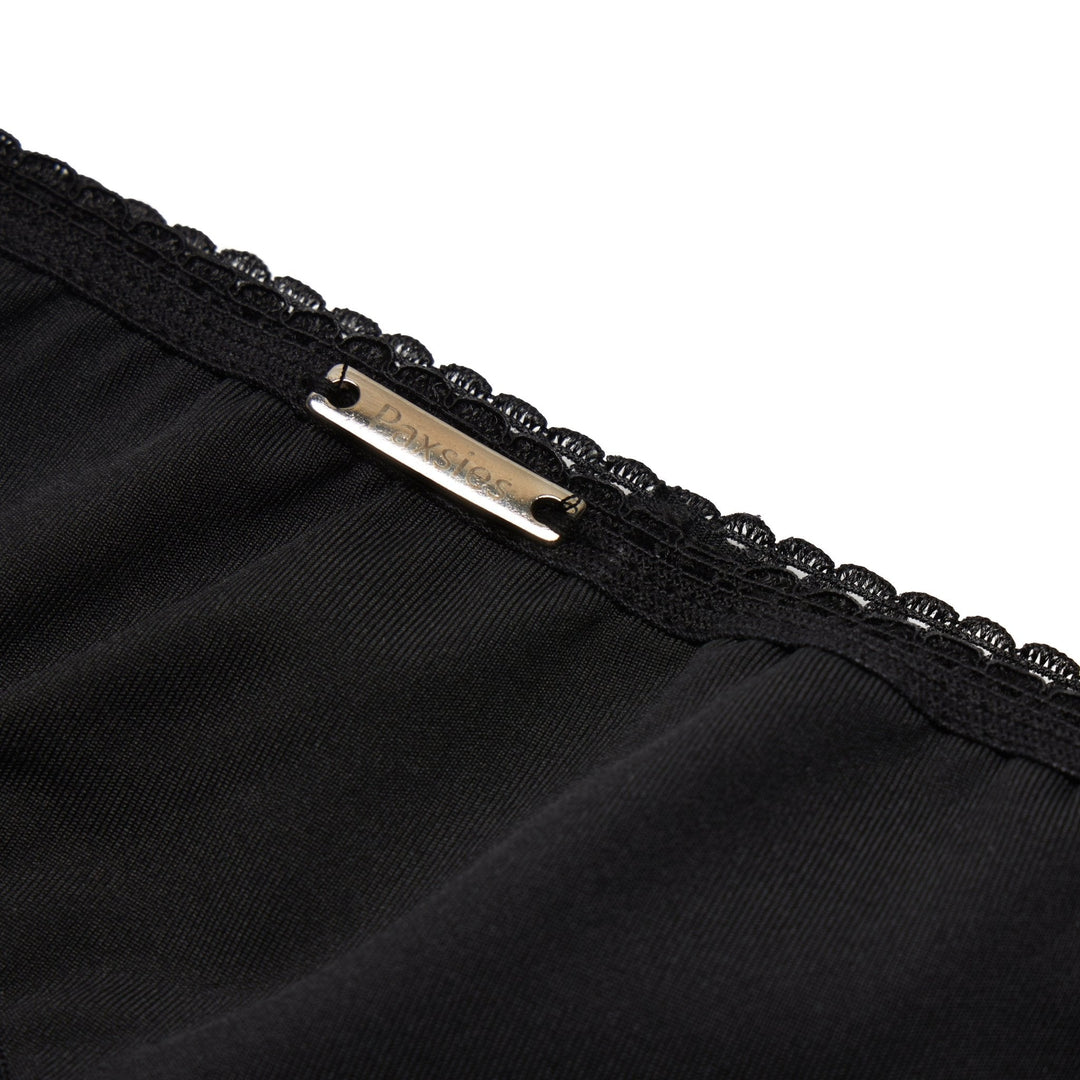FTM Hormone Replacement Therapy: How Does HRT Work?
The information below is for educational and entertainment purposes only and should not be used as medical advice. It does not replace or represent the advice of a medical professional.
Hormone replacement therapy (HRT) is an important part of the transition process for many trans men or transmasculine people. It both helps a great deal in the masculinization process, and maintains these characteristics over the rest of their lives. But how does HRT for trans men work exactly? How do people get access to it? And how much does it cost?
In this article, we'll tell you all need to know about FTM hormone replacement therapy.
What is hormone replacement therapy?
Hormone replacement therapy (HRT) is a treatment used both by cis and trans individuals for a number of reasons, including (but not limited to) hormone imbalances or to prevent certain illnesses like osteoporosis. In the case of transmasculine people specifically, testosterone is taken to induce and maintain the body's masculinization which in most cases, relieves gender dysphoria (to an extent). The administration of testosterone — or “T” for short— is done in a number of ways.
The most common method is injection of testosterone with a syringe and needle. Make sure to check out our blog post about testosterone injections for more details!
If you’re afraid of needles, don’t worry! There are other methods you can use to take testosterone, including testosterone gels, creams, patches, tablets, or a pellet (which is implanted under your skin). Each method comes with its own advantages and disadvantages. It’s important to look into each one. There are a number of factors that could influence which method you choose to administer your testosterone, including where you live, your health, and your personal preferences. You can read more about the different ways testosterone is administered here!
What kind of changes should you expect on HRT?
For a lot of trans people, starting HRT is like a second puberty. Over time, you’ll start to see secondary male sex characteristics developing. Our advice is to be patient. The changes will happen gradually, but they will happen. You’ll start to see notable changes usually after a couple of months on HRT. Other changes might take years to fully develop. Bear in mind, the HRT journey is different for everyone. In general, though, you can expect to see these changes:
-
Voice — On testosterone, your vocal cords thicken, which will give you a deeper voice.
-
Facial hair — Some transmasculine people on HRT will grow facial hair. This doesn’t just include a beard and moustache - some people also report that their eyebrows thicken during HRT. Bear in mind that this is highly dependent on a number of factors, including genetics!
-
Body hair - The hair growth doesn’t stop on your face! On HRT, expect to see more body hair too, including on your arms, legs, chest, belly, and back. (This, too, depends on a lot of factors).
-
Body shape — Over time, you might experience an increase in muscle mass and some fat redistribution, which may contribute to the development of a more “masculine” body shape.
-
Face — HRT might cause fat to redistribute away from your face, which causes a more angular and sharp appearance.
-
Bottom Growth — On testosterone, the clitoris will grow in size. This process can be quite uncomfortable for some!
-
Periods — Over time, testosterone disrupts the menstrual cycle, which significantly reduces (or even stops) periods in transmasculine people.
-
Skin — HRT can cause oily skin and at times, acne. Fear not! There are tons of acne treatment options available, if you know where to look. Your skin might become rougher too, both in feeling and appearance.
-
Scent — Testosterone changes your body odor (and even the smell of your urine). If you’re experiencing these, don’t worry - it’s normal!
-
Sex drive — Some people report an increase in their sex drive while on testosterone.
-
Appetite — A lot of people experience an increase in appetite, especially early in their medical transition. Don’t worry, though, because these feelings tend to plateau once hormone levels stabilize over time.
- Mental/emotional changes — Some report a shorter temper and/or feeling down on various cycles or their testosterone administration. At the same time, others have reported the opposite, feeling calmer and even-tempered. These changes largely depend on the individual, and it's always important to closely observe the emotional changes happening. Many recommend tracking these changes in a journal. Check out our list of essentials for a smooth FTM transition!
How much does HRT cost?
Of course, cost is important to consider when starting HRT. Our answer here is based on self-administered testosterone by injection and only serves as a very rough estimate. Keep in mind that other methods will have other associated costs. Also, the price might significantly differ depending on where you live and the availability of testosterone.
You can generally divide the costs of HRT into three parts: the testosterone itself, supplies (like needles and syringes), and medical visits.
- Testosterone - Around $90 for a 10 ml vial of 200 mg/ml solution. Depending on your dosage, this might last you several months.
- Draw needles - $4 for a pack of 100.
- Injection needles - $4 for a pack of 100.
- Syringes - $5 for a pack of 100.
- Medical visits - $150 per visit, including blood checks and prescriptions. Medical visits happen around twice a year, and could be more frequent early in the process of medically transitioning.
Some health insurance providers cover some costs of HRT. Make sure to talk to your insurance provider to discuss your options!
Is HRT safe?
One of the main concerns about HRT is if testosterone can damage the body in any way, especially in the long term. The short answer is, no, HRT hasn’t been found to cause damage to the body. Meriggiola et al. (2011) concluded that
Testosterone administration in FtM subjects has a good safety profile" after finding "no significant serious adverse effects, and no clinically relevant changes" in 45 FTM patients treated for at least ten years with testosterone. (Meriggiola et al, 2011)
Other studies report similar conclusions, and in many cases, supports the claim that HRT has a positive effect on trans men's health. These positive health effects can be attributed to a decrease in feelings of depression, anxiety, anger, and even suicidal thoughts. HRT is an important part of trans health care, and for some, is literally saving lives!
Another common question regarding HRT is whether trans men can get pregnant while on testosterone. The short answer is, yes. While testosterone will significantly decrease the possibility of getting pregnant, it does not completely eliminate it. That being said, to reduce the risk of an unwanted pregangy, it’s important when having sex with someone who is able to produce sperm to use some form of birth control. If you do wish to become pregnant, you should discuss this with your healthcare provider. You can read the story about a trans dad here.
Can you stop HRT?
In most cases, trans people stay on HRT practicially for the rest of their lives. There are a number of reasons for this. In cases where the ovaries and uterus are present, estrogen production would restart, and with it the feminization process — including the resumption of monthly periods. In cases where the ovaries have been removed, because the body cannot produce adequate amounts of either testosterone or estrogen on it’s own, some fall into a menopause-like state causing hot flashes, bone density loss, and other health issues.
The decision to stop HRT is up to each person, and could be for a variety of reasons. Still, there are important factors to consider when making that decision, and this should be discussed with a medical professional since it would be a huge readjustment for the body. That being said, certain changes due to testosterone are irreversible.
- Voice - Your voice will stay at the pitch it was when HRT is stopped.
- Hair - the amount of hair that has developed on the face, and the body will continue to grow, but no new patches of hair will develop. The hair might slightly change in appearance or texture.
- Bottom Growth - the clitoris will stay at the length/thickness as when HRT is stopped.
Conclusion
HRT causes a lot of exciting changes for transmasculine people, and for many it plays a huge role in alleviating feelings of gender dysphoria. These changes can be overwhelming for some. It’s important to remember that HRT isn’t for everyone, and that you should check in with your healthcare provider to see if it’s right for you. While HRT can help a lot with feelings of gender dysphoria, it’s not a fix-all solution for. After all, HRT is only one of the many processes trans people go through in their transition. If you or a loved one is undergoing or considering HRT, it's important to remember that through all these changes, they’ll still be the same person. After all, it’s what’s on the inside that counts!
Sources
- Author Unknown, year unknown. FTM Testosterone Therapy Basics. [online] FTM Guide. Available at: http://www.ftmguide.org/ttherapybasics.html
- Author Unknown, 2016, November 21. Hormone Replacement Therapy for Men. [online] Healthline. Available at: https://www.healthline.com/health/hormone-replacement-therapy-for-men
- Ballard, J.R., 2019. FAQs About Transitioning With Hormone Replacement Therapy (HRT). [online] FTM Magazine. Available at: https://www.ftmmagazine.com/faq-about-transitioning-with-hormone-replacement-therapy-hrt/
- Deutsch, M., 2020, July. Information on Testosterone Hormone Therapy. [online] UCSF Transgender Care. Available at: https://transcare.ucsf.edu/article/information-testosterone-hormone-therapy
- Riverdale, J., 2018, December 29. Is Long-term Testosterone Treatment Safe? [online] Transguys.com Available at: https://transguys.com/ref/research/is-long-term-testosterone-treatment-safe









